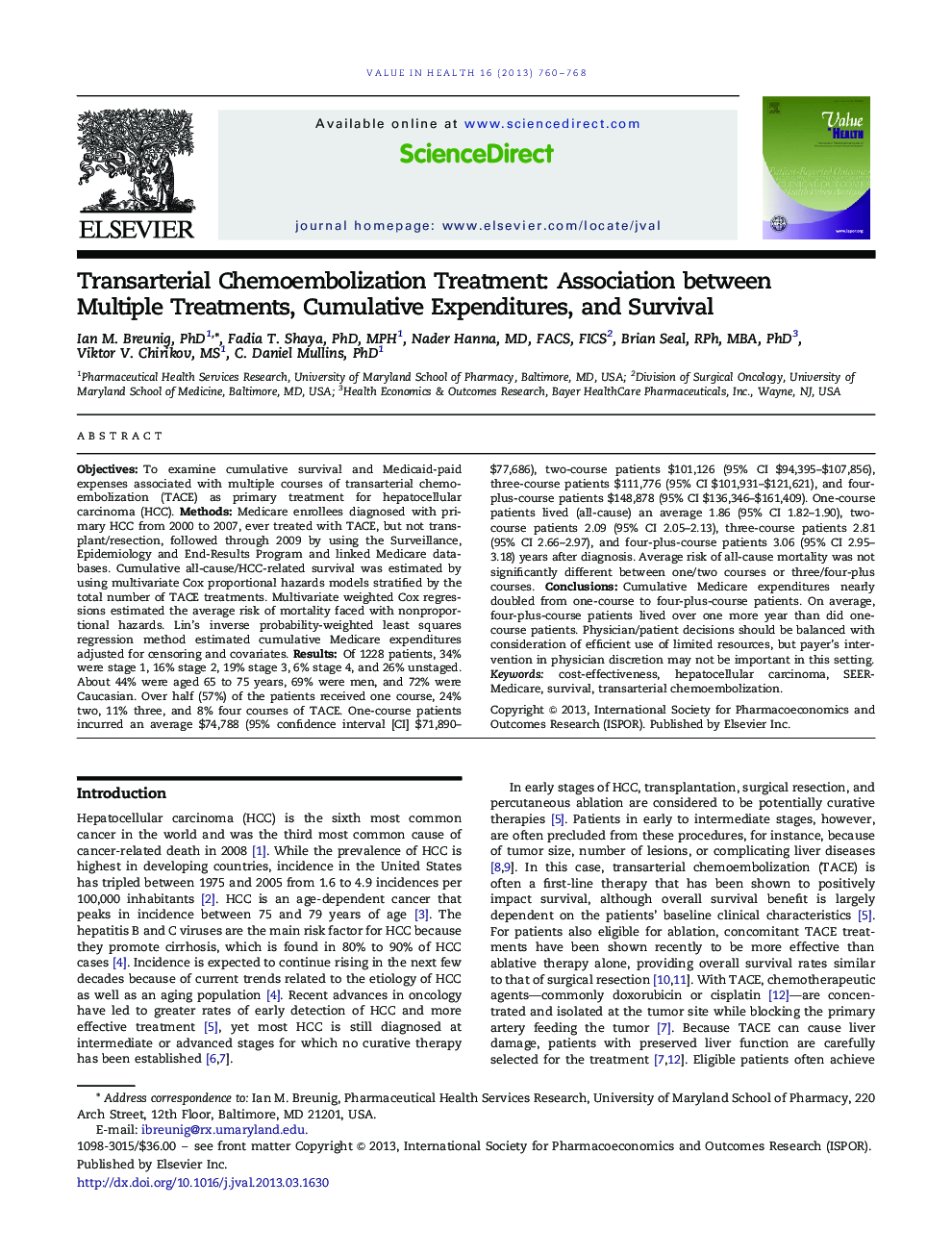| کد مقاله | کد نشریه | سال انتشار | مقاله انگلیسی | نسخه تمام متن |
|---|---|---|---|---|
| 987519 | 935146 | 2013 | 9 صفحه PDF | دانلود رایگان |
ABSTRACTObjectivesTo examine cumulative survival and Medicaid-paid expenses associated with multiple courses of transarterial chemoembolization (TACE) as primary treatment for hepatocellular carcinoma (HCC).MethodsMedicare enrollees diagnosed with primary HCC from 2000 to 2007, ever treated with TACE, but not transplant/resection, followed through 2009 by using the Surveillance, Epidemiology and End-Results Program and linked Medicare databases. Cumulative all-cause/HCC-related survival was estimated by using multivariate Cox proportional hazards models stratified by the total number of TACE treatments. Multivariate weighted Cox regressions estimated the average risk of mortality faced with nonproportional hazards. Lin’s inverse probability-weighted least squares regression method estimated cumulative Medicare expenditures adjusted for censoring and covariates.ResultsOf 1228 patients, 34% were stage 1, 16% stage 2, 19% stage 3, 6% stage 4, and 26% unstaged. About 44% were aged 65 to 75 years, 69% were men, and 72% were Caucasian. Over half (57%) of the patients received one course, 24% two, 11% three, and 8% four courses of TACE. One-course patients incurred an average $74,788 (95% confidence interval [CI] $71,890–$77,686), two-course patients $101,126 (95% CI $94,395–$107,856), three-course patients $111,776 (95% CI $101,931–$121,621), and four-plus-course patients $148,878 (95% CI $136,346–$161,409). One-course patients lived (all-cause) an average 1.86 (95% CI 1.82–1.90), two-course patients 2.09 (95% CI 2.05–2.13), three-course patients 2.81 (95% CI 2.66–2.97), and four-plus-course patients 3.06 (95% CI 2.95–3.18) years after diagnosis. Average risk of all-cause mortality was not significantly different between one/two courses or three/four-plus courses.ConclusionsCumulative Medicare expenditures nearly doubled from one-course to four-plus-course patients. On average, four-plus-course patients lived over one more year than did one-course patients. Physician/patient decisions should be balanced with consideration of efficient use of limited resources, but payer’s intervention in physician discretion may not be important in this setting.
Journal: Value in Health - Volume 16, Issue 5, July–August 2013, Pages 760–768
